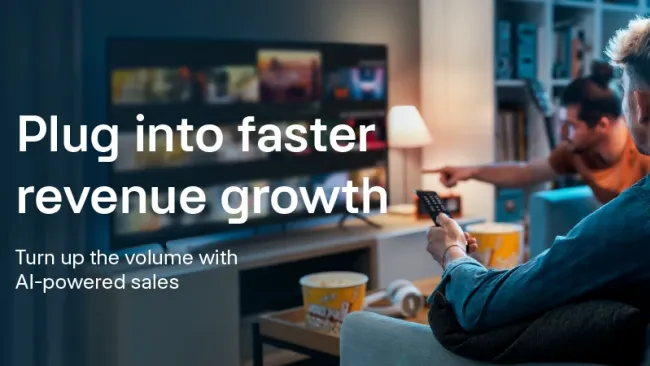Google, known as an innovator since its inception, is no stranger to the idea of relevant communications based on consumer needs and preferences. Vice President of Sales and Service Jim Lecinski spends much of his time exploring innovation within the realm of marketing. As he sees it, the ultimate goal of marketing is steadfast—gather insights about customers and the market, then act based on those insights in a way that drives ideal consumer behavior. Innovation lies in how that idea is put into practice.
Lecinski advocates for an expansion of marketing strategy into what Google calls the "Zero Moment of Truth (ZMOT)." Progressive marketers proactively engage with consumers beyond the traditional channels to reflect how consumers realistically behave at the earliest stages of the customer lifecycle. ZMOT is the moment after consumers become aware of a product through a stimulus (advertisement, word-of-mouth, etc), but before they make a decision to purchase and experience it. Here, he discusses how two exceptional market forces open up new opportunities in marketing strategy at this critical moment.
Customer Strategist: Can you explain the idea behind the Zero Moment of Truth, and how it influences innovation with consumers?
Jim Lecinski: The basic concept is that two macro forces now taking place at the same time have changed the way you need to market, because they have changed the way consumers make their decisions. The forces are:
- The ongoing global recession. This impacts both individual consumers as well as businesses. Both are being more careful with their pocketbooks. They need to be more selective and more careful with their spending.
- An explosion of technology. We've had recessions and depressions as marketers before. What's different this time is that there's an explosion in technology. So while you have this sort of recession, retrenchment, and care in spending money, at the same time more people have a supercomputer at the tip of their fingers.
We've had recessions before and we've had technology advancements before. But we've never had them on top of each other to the extent we've had these two. Given that situation, we set out to explore how consumers and business buyers make decisions differently.
CS: The concept of ZMOT lies somewhere in between awareness and consideration—the moment when a consumer decides to learn more about a product or service. You write in your book that "it's a moment where marketing happens, where information happens, and where consumers make choices that affect the success and failure of nearly every brand in the world." What do marketers need to know about the concept?
JL: Mass advertising is no longer sufficient to close a sale. It actually prompts more questions in consumers' minds than it answers. They wonder how good the product is, where to get it, who has the best offer, what is the return policy, etc.
Those questions are what prompt zero moment behaviors. I search, I watch a video on YouTube, I ask my social network if anyone has tried the product or would recommend it, etc. Thus you see the rise in importance in things like ratings and reviews.
It's not just the simple "customers in control" idea that we've all heard. It's what you do as a brand once your customer moves from seeing your stimulus into those zero moments. Identify what those zero moments are, then be there and be part of that discussion and decision. Depending on the category, upwards of 85 percent of all purchases take the ZMOT into account when determining what a consumer is going to buy.
CS: Can you share an example?
JL: A great example is from L'Oreal, which recently launched a blemish balm, also called bb cream. It's a hot new cosmetics category that came out of Asia. L'Oreal knew that in order for it to be successful introducing its bb cream, it needed to understand what the zero moment was. The company looked at the most searched-for terms related to bb cream. It turned out that bb cream reviews and bb cream ratings were the most searched for thing in the zero moment.
L'Oreal built an ad campaign online all around ratings and reviews of its bb cream. It knew that it wasn't enough to just tell people that it has a cream and where to get it. L'Oreal knew the game would be won or lost in between.
If a consumer goes to YouTube and does a search for "best bb cream," that's a chance for you as a brand to win or lose that sale. If you're not there, maybe the voice of an individual consumer might be there recommending you as a brand. But you shouldn't be comfortable outsourcing that to someone else. Doesn't it make sense in those key zero moments for a brand to have a presence and a voice? This is an innovative approach and different thinking. Through 50 years of advertising and marketing strategy, this was never a step.
CS: For marketers to win the Zero Moment of Truth, they need to understand their customers' needs, communicate messages on customers' terms, and be genuine. Why do you think some of these customer-focused concepts are so important to innovation in business?
JL: Your typical American household makes $52,000 a year and can't afford to buy the wrong $9 product. That has an impact on their purchases, consumption, and what they're able to do for the month. Consumers know how to mitigate that risk by going to YouTube or doing a search, because that's something they learned to do years ago with bigger risk items like SUVs or televisions. Now there's a certain natural extension of that behavior cutting against all categories.
That's where marketers are challenging conventional models—the model of how consumer decisions are made and the legacy model of where to communicate marketing messages. You need an innovative approach to recognize it and be able to act on it.
CS: How must marketers innovate to deliver on the concept?
JL: In general what you see is the Web forcing convergence and cooperation among four sets of teams: marketing, sales, customer service, and market research or customer insight. For example, a series of tweets about a customer experience that your PR or customer service team deals with could provide some clues as to what are zero moment questions that your marketing team can address in their communications.
That's what makes this challenging for some enterprises. [It may be difficult] to break down those walls and work in a collaborative way to win the zero moment of truth.
CS: Do you think marketers in general are adaptable when it comes to exploring new innovations around the consumer?
JL: For brand marketers, there's always been a belief that the brand with the deepest insight wins. It's always been an insights-driven discipline. This just expands horizons a little bit on the definitions and sources of where insights come from. As a marketer, armed with that insight, you can do great things to reach out and connect with consumers.
CS: In addition to coordination and collaboration challenges, what other challenges do marketers face when trying to innovate around the customer?
JL: Another big challenge is recognizing that we need to be in the zero moment of truth and recognize those key moments. We call it "winning all the moments that matter." That means you may need to produce more content to be in those moments. There's long been a belief in the world of brand marketing that you should try to minimize the amount of your marketing budget spent on production (non-working media) and maximize the amount you spend on working media. In this world, that may not always be the best thing to do. If you need to build out customer videos to answer zero moment questions, that might be counter to historical budgeting philosophy. But it's the right thing to do because each of those moments is potentially a sale if you're there in the right moment. If not, it will go to your competitors.
CS: How do you fight the fear of failure about new marketing innovations?
JL: We always encourage a culture of experimentation. We have a culture of experimentation here at Google. We always have many experiments running at any given time in any given quarter. And we would encourage that with others.
Understand what your success metrics are. Is it more visitors to your website? Is it more people joining your email list? Is it people printing coupons? What is that success metric? Then design experiments around winning the zero moment of truth to see if in fact a plan to win it is more beneficial for your end brand metrics than not.
We very much believe that modern brand decisions shouldn't be made by debating around a conference room table. They should be generating a set of reasonable hypotheses, creating tests, and executing those tests out in the market.
CS: So it's basically about taking the customer point of view and realizing their perspective.
JL: Exactly.
















